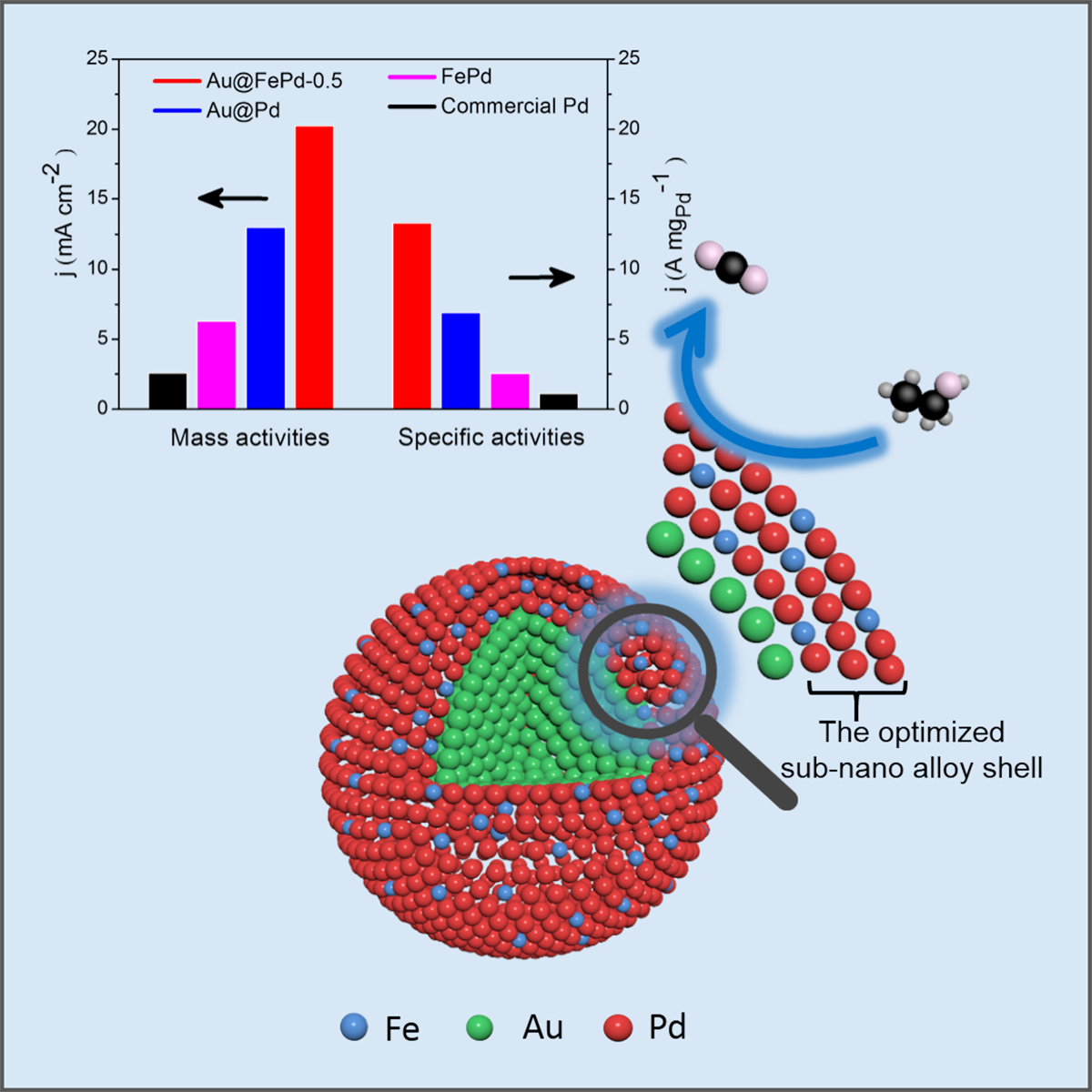Researchers from the Institute of Process Engineering (IPE) of the Chinese Academy of Sciences and Nanjing Normal University recently reported a strategy for boosting the electrocatalytic performance of palladium (Pd) in ethanol oxidation reaction, the key anodic reaction of direct ethanol fuel cells (DEFCs), offering a rational concept for finely engineering the surface of electrocatalysts used in high-efficiency energy conversion devices and beyond.
The study was published in Cell Reports Physical Science on Mar. 1. (DOI:10.1016/j.xcrp.2021.100357)
DEFCs, with ethanol as fuel, have the advantage of high energy density, low toxicity and easy operation. However, the lack of active and robust electrocatalysts for anodic ethanol oxidation impedes the pace of commercialization.
Typically, Au@Pd nanoparticles with a core-shell construction have higher activity and stability during ethanol electro-oxidation than do Pd particles alone. Unfortunately, the larger lattice spacing of Au creates tensile strain in thin Pd shells, which endangers their catalytic performance by strengthening the absorption of poisonous reaction intermediates on their surfaces.
"A rational design that fully takes advantage of core-shell architectures and simultaneously inhibits the lattice tensile effect in Pd shells induced by Au cores would definitely be favorable for further improving their performance in the electro-oxidation of ethanol molecules," said Prof. YANG Jun from IPE, the corresponding author of the study.
The researchers demonstrated this concept by coupling alloying effects with core-shell construction to optimize the surfaces of Pd shells in order to achieve high-efficiency ethanol electro-oxidation.
The scientists alloyed Fe atoms into thin Pd shells to compensate for their lattice expansion. Electrochemical evaluations show that the core-shell Au@FePd nanoparticles prepared this way exhibit the highest mass activity and specific activity for catalyzing ethanol electro-oxidation ever observed in an alkaline medium.

Combining core-shell construction with an alloying effect to boost the catalytic performance of palladium in ethanol oxidation reactions. (Image by YANG Jun)
"Next, we are going to optimize a number of parameters, e.g., the size of the core, the thickness of the alloy shell, and the composition of transition metals in alloy shells," said Prof. YANG. In this way, the researchers hope to create more electrocatalysts with higher efficiency and lower cost in order to propel the development of direct alcohol fuel cells.
Media Contact:
LI Xiangyu
Public Information Officer
Institute of Process Engineering, Chinese Academy of Sciences, Beijing 100190, P. R. China.
E-mail: xiangyuli@ipe.ac.cn
Tel: 86-10-82544826
 Search
Search




 京公网安备110402500047号
京公网安备110402500047号